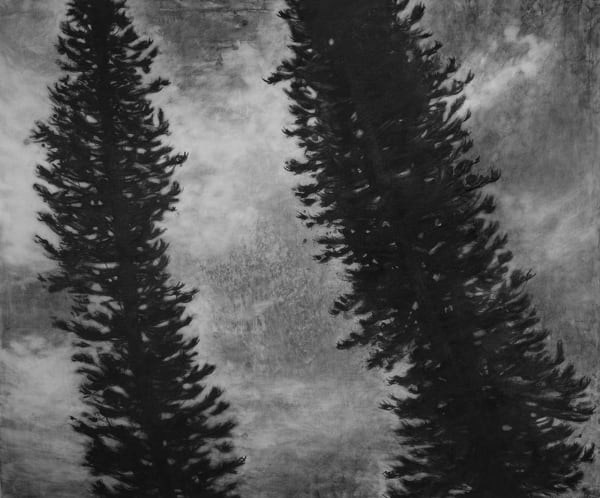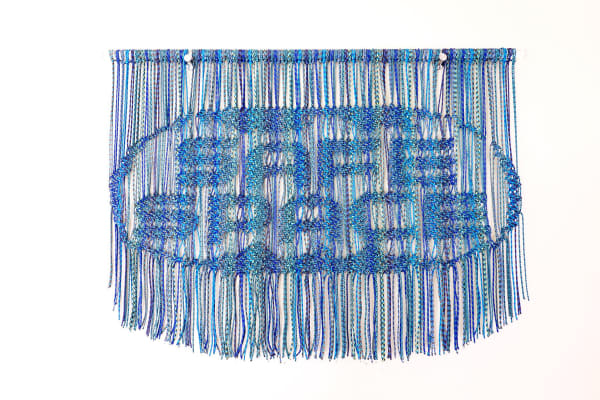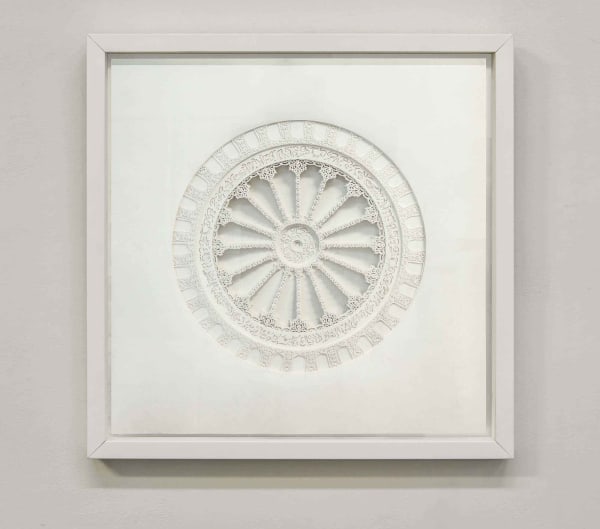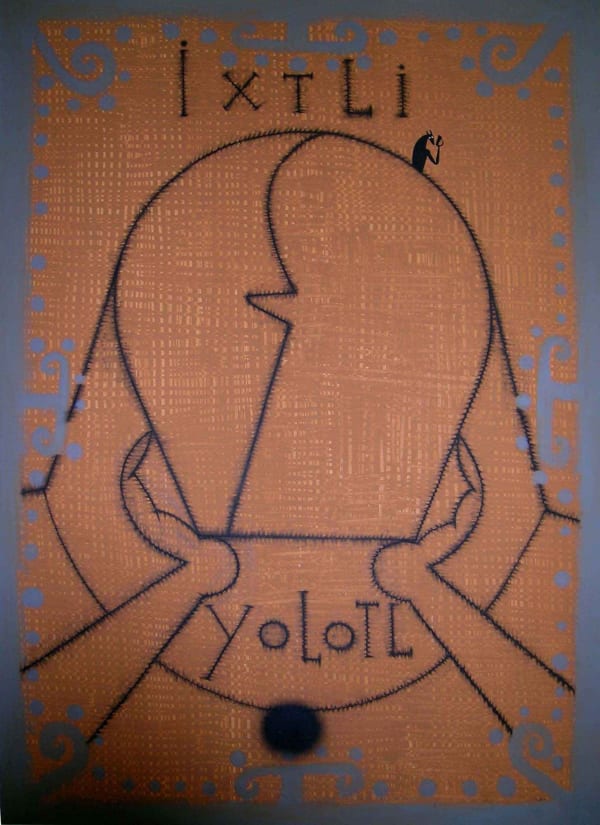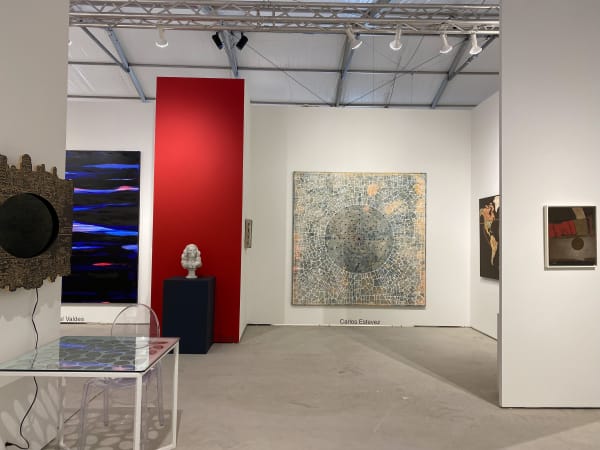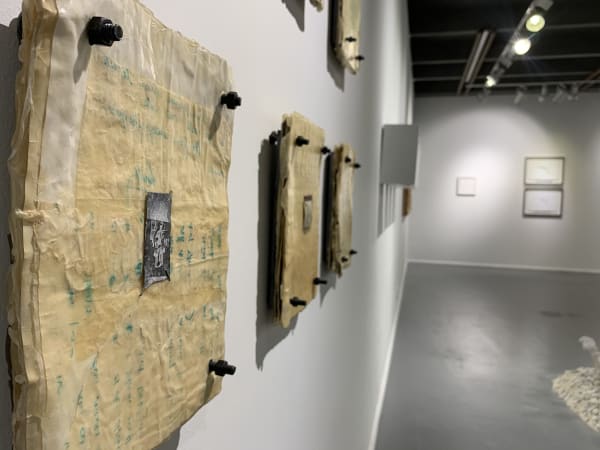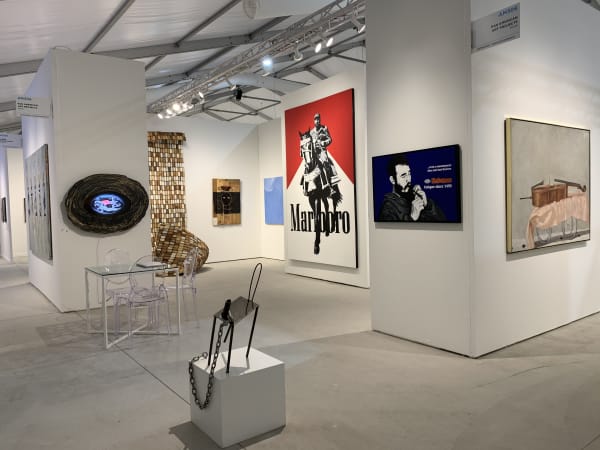Cuban artist Jose Manuel Fors has tried to rewrite the silenced, fragmented history of his generation in Cuba, through his reconstruction of memories, of what “Beauty” he was able to save. With his photographic work and his Objects, Fors has created a metaphorical language to reconstruct the identity and social memory that were taken away from him by political interests alien to him and to his generation in Cuba. His work comes from minimalism, recycling and repurposing objects, where fragments become his autobiographical statements.
His dissatisfaction with traditional means of art made it possible for experimentations with objects and installations to become among his most used resources to reconstruct scenes from his memories. In Fors's work, we can find photographs tied together, painted leaves trapped in transparent cubes, broken ceramics transformed into a new medium, pages of books turned into entire libraries, and incomplete stories behind it all. This accumulation of distorted factual evidence demonstrates the selective nature of memory, and its ability to save truly momentous events. Fors, like Granger, found light in the age of Darkness because he knew how to reinvent himself again and again in each of his works’ fragments.
-
 Jose Manuel ForsCraters, N.D.Photo collage12 x 12 in
Jose Manuel ForsCraters, N.D.Photo collage12 x 12 in
30.48 x 30.48 cmView more details -
 Jose Manuel ForsS/T, N.D.Collage on Paper39 x 20 in
Jose Manuel ForsS/T, N.D.Collage on Paper39 x 20 in
99.06 x 50.8 cmView more details -
 Jose Manuel ForsS/T (2), N.D.Collage on Paper39 x 20 in
Jose Manuel ForsS/T (2), N.D.Collage on Paper39 x 20 in
99.06 x 50.8 cmView more details -
 José Manuel ForsPalimpsesto, 2021Mixed media67 x 52 in.Sold
José Manuel ForsPalimpsesto, 2021Mixed media67 x 52 in.Sold
170.2 x 132.1 cm.View more details -
 José Manuel ForsPalimpsesto, 2021Mixed media48 x 48 in
José Manuel ForsPalimpsesto, 2021Mixed media48 x 48 in
121.9 x 121.9 cmView more details -
 Jose Manuel ForsCandies. Homage to Felix Gonzalez-Torres, 2019Installation. A group of approximately 50 iron vises of Soviet manufacture, some of them displaying negatives, photographs and miscellaneous objects.
Jose Manuel ForsCandies. Homage to Felix Gonzalez-Torres, 2019Installation. A group of approximately 50 iron vises of Soviet manufacture, some of them displaying negatives, photographs and miscellaneous objects.
Dimensions and price variableView more details -
 Jose Manuel ForsPalimpsesto, 2019Mixed media37 x 25 inSold
Jose Manuel ForsPalimpsesto, 2019Mixed media37 x 25 inSold
93.98 x 63.5 cmView more details -
 Jose Manuel ForsPalimpsesto, 2019Assembled strips of book pages69 x 26 x 3 inSold
Jose Manuel ForsPalimpsesto, 2019Assembled strips of book pages69 x 26 x 3 inSold
175.3 x 66 x 7.6 cmView more details -
 Jose Manuel ForsPalimpsesto, 2019Mixed media37 x 25 inSold
Jose Manuel ForsPalimpsesto, 2019Mixed media37 x 25 inSold
93.98 x 63.5 cmView more details -
 Jose Manuel ForsPalimpsesto, 2019Mixed media37 x 25 in
Jose Manuel ForsPalimpsesto, 2019Mixed media37 x 25 in
93.98 x 63.5 cmView more details -
 Jose Manuel ForsPalimpsesto, 2019Mixed media37 x 25 in.Sold
Jose Manuel ForsPalimpsesto, 2019Mixed media37 x 25 in.Sold
94 x 63.5 cm.View more details -
 Jose Manuel ForsSedosas pausas, 2019Collage on Paper49.50 x 49.25 in
Jose Manuel ForsSedosas pausas, 2019Collage on Paper49.50 x 49.25 in
125.73 x 125.09 cmView more details -
 Jose Manuel ForsSedosas pausas, 2019Collage on Heavy Paper18 x 17.75 in
Jose Manuel ForsSedosas pausas, 2019Collage on Heavy Paper18 x 17.75 in
45.7 x 45.1 cmView more details -
 Jose Manuel ForsSedosas pausas, 2019Collage on Heavy Paper18 x 17.75 inSold
Jose Manuel ForsSedosas pausas, 2019Collage on Heavy Paper18 x 17.75 inSold
45.72 x 45.08 cmView more details -
 Jose Manuel ForsSedosas pausas, 2019Collage on Paper18 x 17.75 in
Jose Manuel ForsSedosas pausas, 2019Collage on Paper18 x 17.75 in
45.72 x 45.08 cmView more details -
 Jose Manuel ForsSedosas pausas, 2019Collage on Heavy Paper18 x 17.75 in
Jose Manuel ForsSedosas pausas, 2019Collage on Heavy Paper18 x 17.75 in
45.72 x 45.08 cmView more details -
 Jose Manuel ForsSedosas pausas, 2019Collage on Heavy Paper18 x 17.75 in
Jose Manuel ForsSedosas pausas, 2019Collage on Heavy Paper18 x 17.75 in
45.72 x 45.08 cmView more details -
 Jose Manuel ForsSedosas pausas, 2019Collage on Heavy Paper18 x 17.75 inSold
Jose Manuel ForsSedosas pausas, 2019Collage on Heavy Paper18 x 17.75 inSold
45.72 x 45.08 cmView more details -
 Jose Manuel ForsSedosas pausas, 2019Collage on Heavy Paper18 x 17.75 in$ 2,500.00
Jose Manuel ForsSedosas pausas, 2019Collage on Heavy Paper18 x 17.75 in$ 2,500.00
45.72 x 45.08 cmView more details -
 José Manuel ForsEnglish Garden Series, 2018Collage of broken ceramics on wooden panel48 x 48 in
José Manuel ForsEnglish Garden Series, 2018Collage of broken ceramics on wooden panel48 x 48 in
121.9 x 121.9 cmView more details -
 Jose Manuel ForsPalimpsesto, 2018Assembled strips of book pages69 x 26 x 3 inSold
Jose Manuel ForsPalimpsesto, 2018Assembled strips of book pages69 x 26 x 3 inSold
175.3 x 66 x 7.6 cmView more details -
 Jose Manuel ForsUntitled, 2017Photo collage79 x 28 in
Jose Manuel ForsUntitled, 2017Photo collage79 x 28 in
200.66 x 71.12 cmView more details -
 Jose Manuel ForsA la Sombra de los Maestros #1, 2011Mixed media38 x 38 x 15 inView more details
Jose Manuel ForsA la Sombra de los Maestros #1, 2011Mixed media38 x 38 x 15 inView more details -
 Jose Manuel ForsA la Sombra de los Maestros #3, 2011Mixed media38 x 38 x 15 inView more details
Jose Manuel ForsA la Sombra de los Maestros #3, 2011Mixed media38 x 38 x 15 inView more details -
Jose Manuel ForsA la sombra de los Maestros #4, 2011Mixed media64 x 64 x 16 in
162.6 x 162.6 x 40.6 cmView more details -
 Jose Manuel ForsAtados 2, 2011Mixed media11 x 7 inSold
Jose Manuel ForsAtados 2, 2011Mixed media11 x 7 inSold
27.94 x 17.78 cmView more details -
 Jose Manuel ForsAtados 2, 2011Mixed media7 x 11 x 3 in
Jose Manuel ForsAtados 2, 2011Mixed media7 x 11 x 3 in
17.8 x 27.9 x 7.6 cmView more details -
 Jose Manuel ForsAtados 2, 2011Mixed media7 x 11 x 3 inSold
Jose Manuel ForsAtados 2, 2011Mixed media7 x 11 x 3 inSold
17.8 x 27.9 x 7.6 cmView more details -
 Jose Manuel ForsAtados 2, 2011Mixed media11 x 7 x 3 inSold
Jose Manuel ForsAtados 2, 2011Mixed media11 x 7 x 3 inSold
27.9 x 17.8 x 7.6 cmView more details -
 Jose Manuel ForsAtados 2, 2011Mixed media7 x 11 x 3 inSold
Jose Manuel ForsAtados 2, 2011Mixed media7 x 11 x 3 inSold
17.8 x 27.9 x 7.6 cmView more details -
 Jose Manuel ForsAtados 2, 2011Mixed media11 x 7 x 3 inSold
Jose Manuel ForsAtados 2, 2011Mixed media11 x 7 x 3 inSold
27.9 x 17.8 x 7.6 cmView more details -
 Jose Manuel ForsCubo, 2011Mixed media12 x 12 x 12 inView more details
Jose Manuel ForsCubo, 2011Mixed media12 x 12 x 12 inView more details -
 Jose Manuel ForsCubo, 2011Mixed media12 x 12 x 12 inView more details
Jose Manuel ForsCubo, 2011Mixed media12 x 12 x 12 inView more details -
 Jose Manuel ForsCubos, 2011Mixed media12 x 12 x 12 inView more details
Jose Manuel ForsCubos, 2011Mixed media12 x 12 x 12 inView more details -
 Jose Manuel ForsCubos, 2011Mixed media12 x 12 x 12 in
Jose Manuel ForsCubos, 2011Mixed media12 x 12 x 12 in
30.5 x 30.5 x 30.5 cmView more details -
 Jose Manuel ForsCubos, 2011Mixed media12 x 12 x 12 inView more details
Jose Manuel ForsCubos, 2011Mixed media12 x 12 x 12 inView more details -
 Jose Manuel ForsCubos, 2011Mixed media12 x 12 x 12 inView more details
Jose Manuel ForsCubos, 2011Mixed media12 x 12 x 12 inView more details -
 Jose Manuel ForsCubos, 2011Mixed media12 x 12 x 12 inView more details
Jose Manuel ForsCubos, 2011Mixed media12 x 12 x 12 inView more details -
 Jose Manuel ForsObjetos Perdidos, 2008Collage of original photos29.50 x 78.50 in
Jose Manuel ForsObjetos Perdidos, 2008Collage of original photos29.50 x 78.50 in
74.93 x 199.39 cmView more details -
 Jose Manuel ForsTierra Rara, 2008Collage of original photos59 x 78 in
Jose Manuel ForsTierra Rara, 2008Collage of original photos59 x 78 in
149.86 x 198.12 cmView more details -
 Jose Manuel ForsLos Objetos, 2001Collage of 21 Silver Gelatin Prints46 x 55 in
Jose Manuel ForsLos Objetos, 2001Collage of 21 Silver Gelatin Prints46 x 55 in
116.84 x 139.7 cmView more details -
 Jose Manuel ForsUntitled, 1994Mixed media20 x 24 inSold
Jose Manuel ForsUntitled, 1994Mixed media20 x 24 inSold
50.8 x 61 cmView more details -
 Jose Manuel ForsEl Banco, 1983Silver gelatin print16 x 11.50 in
Jose Manuel ForsEl Banco, 1983Silver gelatin print16 x 11.50 in
40.64 x 29.21 cmEd. of 10View more details
Jose Manuel Fors was born in 1956 in Havana, Cuba. He attended the San Alejandro Academy and the Institute of Museology, both in Havana, Cuba. Fors has exhibited internationally in the United States, Spain and Japan. His work can be found at the collections of the Museum of Contemporary Art (Los Angeles); Los Angeles County Museum of Art (Los Angeles); The Museum of Fine Arts (Houston); The Museum of Fine Arts Havana and at Fundacion Museo de Bellas Artes (Caracas, Venezuela), among others.
Fors was a member of the legendary Volumen I (Volume I), and participated in their first exhibition in 1981 with an installation. During the Eighties, Fors produced installations that were ground-breaking for the Cuban context, and these are perhaps his best known works. Working with natural materials, such as leaves, was a challenge at a time, when something like that was not generally considered art in his country. His installations and other works of this period leaned towards a more conceptual approach. Instead of the universal and trite symbols of time, Fors chose decadence, as a metaphoric image through his dried leaves accumulations to render the passage of time. This was the backbone of his first solo exhibition titled Acumulaciones (Accumulations) in 1983. In those early years, he was engaged in exploring the concept of the passage of time and the evocative power of memory, and these installations proved to be the ideal visual solutions.
His work has always revolved around memory in one way or another, either through his photographs or his installations. When he began to exhibit in the late Seventies, photography was far from being his technique of choice. He was trained as a painter and his excursions into photography began when he had to photograph some of his installations. He liked the effect and from then on photography became part of the creative process for him.
-

¿Y esa luz? Es tu sombra - A Symphony of Lights and Shadows
Selection of works from R. Borlenghi’s Collection March 29 - May 25, 2024Pan American Art Projects is please d to announce ¿Y esa luz? Es tu sombra - A Symphony of Lights and Shadows , a collective exhibition from R. Borlenghi’s Collection....Read more -

Text / Image
Collective Exhibition November 16, 2023 - January 6, 2024Text/Image is an exploration of the relationships between these two often interconnected concepts. The show engages in a broad discussion of semiotics and visual rhetoric with the exhibiting artists exploring...Read more -

White Layers
Collective Exhibition September 23 - November 4, 2023Layers, understood as a material and also as a procedure or action, have had specific functions at certain moments in the history of art. Paleolithic artists drew visual narratives on...Read more -

Beyond Paper Boundaries
Collective Show February 1 - March 21, 2020The purpose of this show is two-fold. First, in our main gallery we look at the way that artists can manipulate and contort paper to bring actual dimension and weight...Read more -

Jose Manuel Fors
Candies: Homage to Felix Gonzalez-Torres March 17 - May 4, 2019Fors’s work is deeply self-referential. He is an artist who uses the family environment in order to find meaning in the past, where inhabit the codes that could unravel that...Read more

















































